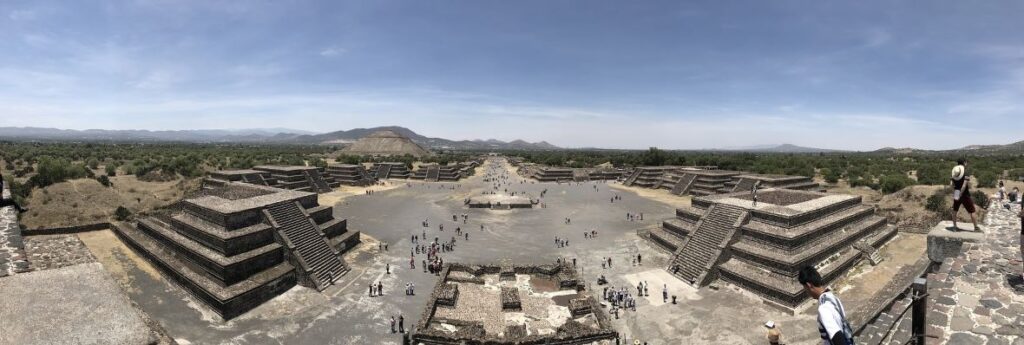The Mexican government says that a private building project is destroying part of the outskirts of the pre-Hispanic ruin site of Teotihuacán, just north of Mexico City, with developers allegedly planning to build an amusement park.
The Culture Department said it has repeatedly issued stop-work orders since March, though the building crews repeatedly ignored them. On Monday the government finally sent in 250 National Guard troops and 60 police officers to seize land and post seizure notices on the property, which allows prosecutors to take control of the plot while those responsible for the work are investigated for criminal charges of “irreparably damaging” the national heritage.
But the delay in stopping the project underlined how Mexico’s unwieldy, antiquated legal system makes it hard to enforce building codes and zoning laws or stop illegal construction, even on protected historical sites.
The area is just outside and across a road from the site’s famous boulevard and pyramid complex and at least 25 ancient structures are threatened as bulldozers threatened to raze as many as 7 hectares at the site, which is a protected area. The council also says looting of artifacts had been detected.
“Teotihuacán is an emblematic site declared as World Heritage by the UNESCO, that represents the highest expression of the identity of the people of Mexico,” the United National international council on monuments said in a statement.
The destruction so close to the capital raises questions about Mexico’s ability to protect its ancient heritage sites. Teotihuacan is one of the country’s most visited archaeological sites, with over 2.6 million visitors per year, and it has hundreds of smaller, more remote, and often unexplored sites.
Teotihuacan is best known for its twin Temples of the Sun and Moon, but it was actually a large city that housed over 100,000 inhabitants and covered around 20 sq. km.
The Pyramids of the Sun or Moon used to draw tens of thousands of visitors for the spring and fall equinoxes each year, before the coronavirus pandemic hit.
The still mysterious city was one of the largest in the world at its apex between 100 B.C. and A.D. 750. But it was abandoned before the rise of the Aztecs in the 14th century.

